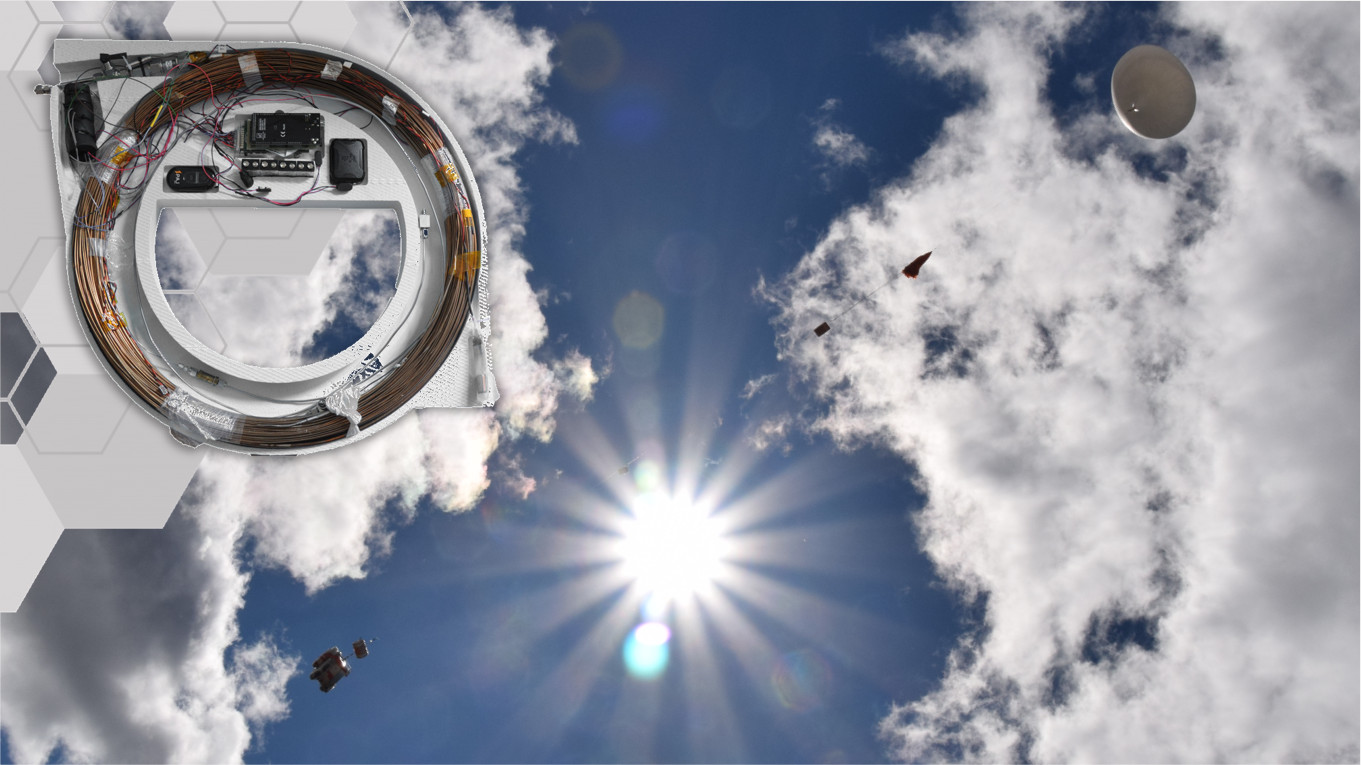Published on:

Testing the altitude attribution and vertical resolution of AirCore measurements with a new spiking method.
Duration: 20.11.2020 – 27.05.2021
AirCore samplers have been increasingly used to capture vertical profiles of trace gases reaching from the ground up to about 30 km, in order to validate remote sensing instruments and to investigate transport processes in the stratosphere.
When deployed to a weather balloon, accurately attributing the trace gas measurements to the sampling altitudes is nontrivial, especially in the stratosphere. In this paper we present the CO-spiking experiment, which can be deployed to any AirCore on any platform in order to evaluate different computational altitude attribution processes and to experimentally derive the vertical resolution of the profile by injecting small volumes of signal gas at predefined GPS altitudes during sampling.
We performed two CO-spiking flights with an AirCore from the Goethe University Frankfurt (GUF) deployed to a weather balloon in Traînou, France, in June 2019. The altitude retrieval based on an instantaneous pressure equilibrium assumption slightly overestimates the sampling altitudes, especially at the top of the profiles. For these two flights our altitude attribution is accurate within 250 m below 20 km. Above 20 km the positive bias becomes larger and reaches up to 1.2 km at 27 km altitude. Differences in descent velocities are shown to have a major impact on the altitude attribution bias.
We parameterize the time lag between the theoretically attributed altitude and the actual CO-spike release altitude for both flights together and use it to empirically correct our AirCore altitude retrieval. Regarding the corrected profiles, the altitude attribution is accurate within ±120 m throughout the profile. Further investigations are needed in order to test for the scope of validity of this correction parameter regarding different ambient conditions and maximum flight altitudes. We derive the vertical resolution from the CO spikes of both flights and compare it to the modeled vertical resolution.
The modeled vertical resolution is too optimistic compared to the experimentally derived resolution throughout the profile, albeit agreeing within 220 m. All our findings derived from the two CO-spiking flights are strictly bound to the GUF AirCore dimensions. The newly introduced CO-spiking experiment can be used to test different combinations of AirCore configurations and platforms in future studies.
Thomas Wagenhäuser, Andreas Engel, and Robert Sitals

Due to the hard sealing concept (saphire/ruby) our vavles are very temperature resistant. Even in sub zero environments they perform as expected and where a good match for this application. By using the smallest nozzle and valve travel, ver small pulses where possible wich allowed them to use a very small gas reservar. This saved crucal weight and enabled a successful flight.
INLINE VARIANT
To directly inject the gas, an inline valve configuration was best suited. This allowed them to connect tubings on both ends. The valve hodlder provided an easy way to mount it indisde the AirCore.
The AirCore is an innovative atmospheric sampling system that consists of a long tubing, usually in the shape of a coil, that can sample the surrounding atmosphere and preserve a profile of the trace gas of interest from the middle stratospher to the ground. The narrow diameter and long length are designed to minimize the diffusive mixing occuring inside the tubing between sampling and analysis.
The AirCore, invented and patented by Pieter Tans, has been rigorously evaluated and has been shown to provide measurement precisions better or equal to silicate glass flasks for CO2 and CH4. (Source: https://gml.noaa.gov/ccgg/aircore)